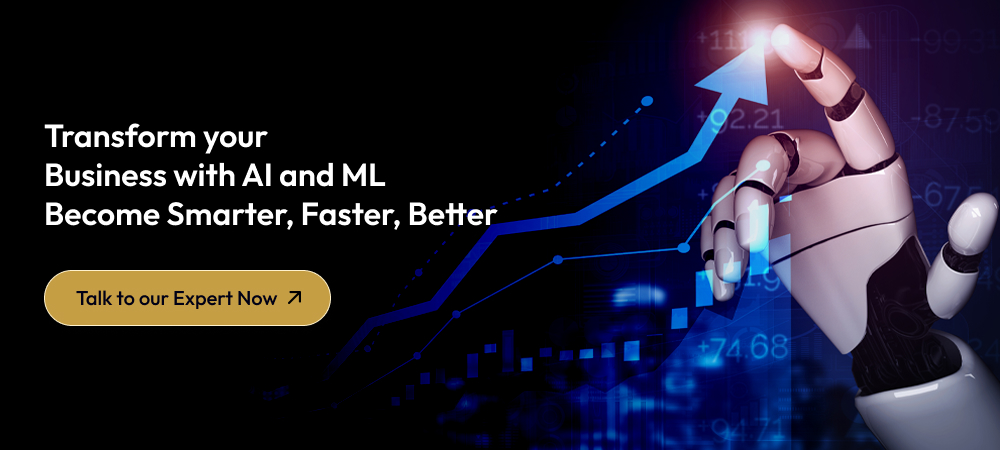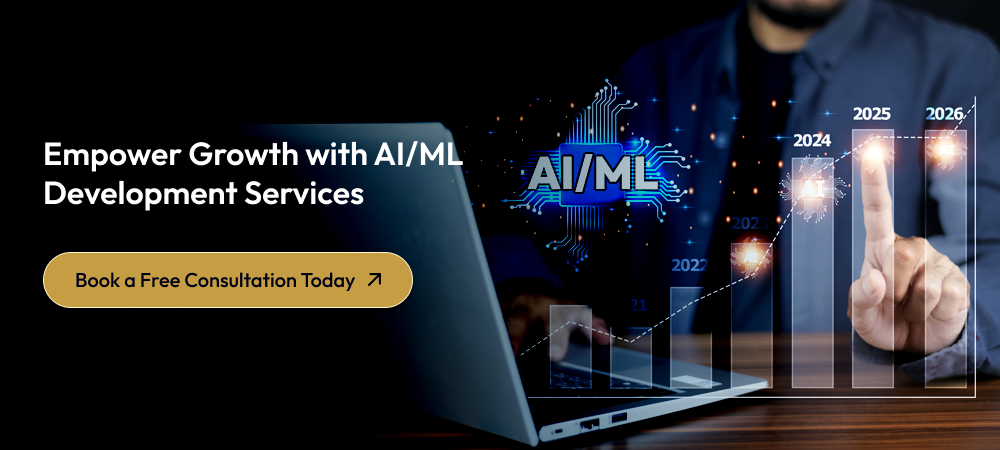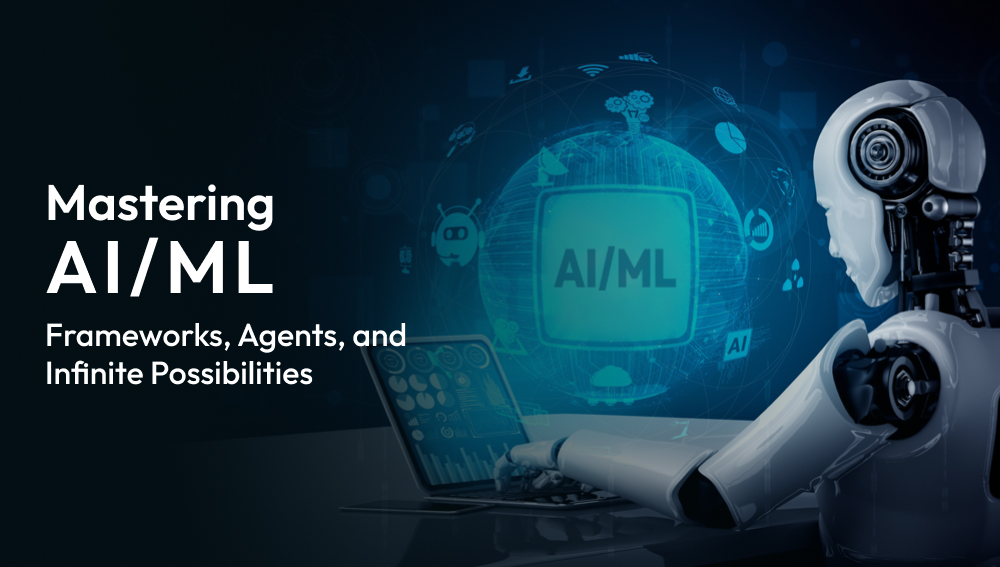
Imagine a world where multiple intelligent agents seamlessly collaborate to automate business processes, analyze data in real time, and provide personalized customer experiences. From virtual assistants managing appointments to fraud detection systems analyzing financial transactions, the rise of AI agent frameworks is transforming industries by coordinating complex tasks with minimal human intervention. The orchestration of these agents has become essential, delivering new capabilities through precise task management and dynamic decision-making.
- Overview of AI/ML Agents and Orchestration
- Importance of Frameworks for Multi-Agent Systems
- Key Trends Driving the Adoption of Orchestration in AI
- Understanding AI and ML Agents in Modern Systems
- Core Frameworks for Orchestrating AI Agents
- Architectural Elements and Design Principles
- Real-World Applications of Orchestrated Systems
- Challenges in Orchestrating AI Systems
- Best Practices for Implementing AI Orchestration
- Future Trends and Innovations in AI and Machine Learning Agents
- Conclusion
Overview of AI/ML Agents and Orchestration
At the heart of these developments are AI and ML agents—autonomous programs designed to perform specific functions independently or as part of a larger system. The challenge lies not just in creating individual agents but in orchestrating them to work together harmoniously, often across diverse domains such as healthcare, finance, and customer service. This is where artificial intelligence frameworks come in, providing the architecture and tools needed to align multiple agents for efficient collaboration.
Importance of Frameworks for Multi-Agent Systems
Without robust machine learning frameworks, managing a multi-agent environment would be nearly impossible. Frameworks like AutoGPT, CrewAI, and Swarm simplify complex workflows by coordinating agents through modular task management, ensuring interoperability and providing scalability to meet growing demands.
These frameworks also play a crucial role in enabling agents to learn from interactions, exchange data seamlessly, and dynamically adapt to changing inputs—qualities essential for modern businesses.
Key Trends Driving the Adoption of Orchestration in AI
The orchestration of AI is not just a technological evolution—it’s becoming a strategic imperative. Several trends are accelerating the adoption of these frameworks:
- Hyperautomation: Businesses are adopting orchestrated agents to streamline workflows and eliminate repetitive tasks, saving on overall operational costs.
- Convergence of AI Capabilities: Modern frameworks integrate NLP, computer vision, and robotics into cohesive multi-agent environments.
- Cloud-Driven Scalability: Cloud-based orchestration ensures that AI agents can be deployed rapidly and scale according to demand without hefty infrastructure costs.
- Security and Interoperability Advances: Frameworks emphasize secure data exchange and interoperability, ensuring smooth collaboration among diverse systems.
The future of AI lies in orchestrated intelligence. With advancements in artificial intelligence frameworks and machine learning frameworks, companies are exploring never-thought-before potential by enabling multiple agents to work together toward shared goals—driving efficiency, productivity, and innovation across industries.
Understanding AI and ML Agents in Modern Systems
AI and machine learning frameworks form the backbone of AI/ML development services, allowing businesses to build intelligent, adaptive systems. AI agents are essential components in these frameworks, responsible for performing tasks autonomously and interacting with their environment. Understanding their various types and key capabilities helps in designing effective AI-driven solutions.
Definition and Types of AI Agents
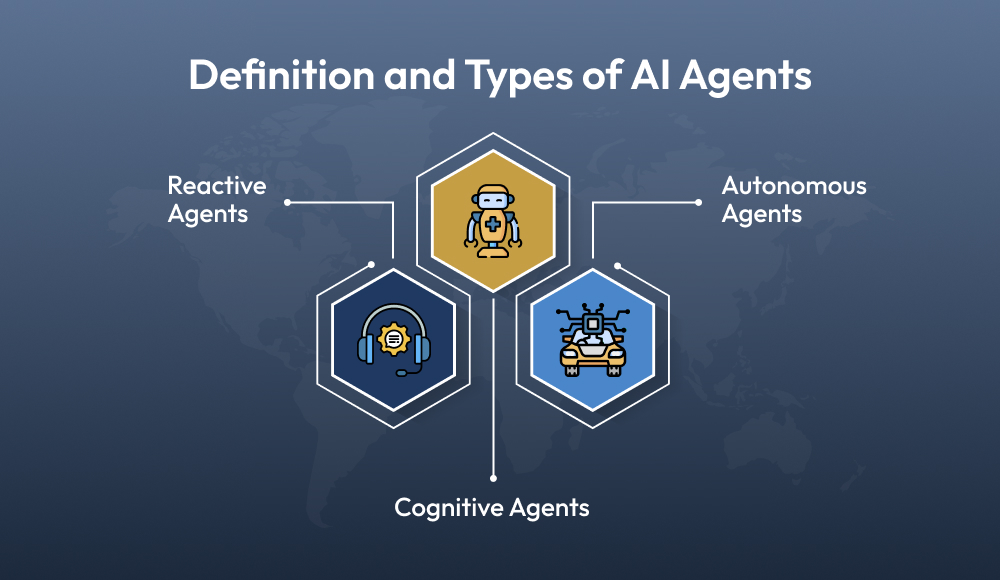
- Reactive Agents:
Reactive agents operate based on predefined responses to specific stimuli. They lack memory or foresight, reacting only to the current environment. These agents are common in applications where real-time response is crucial, such as chatbots or customer service tools. - Autonomous Agents:
Autonomous agents are capable of functioning independently, making decisions without human intervention. These agents are essential in complex environments like autonomous vehicles and robotics, where continuous interaction with external factors is required. - Cognitive Agents:
Cognitive agents mimic human-like reasoning by learning from experiences and improving over time. They are used in advanced AI systems that require problem-solving abilities, such as virtual assistants and fraud detection systems.
Role of Agents in Modern AI Systems
AI agents are pivotal in automating processes, enabling decision-making, and optimizing workflows. They act as building blocks for distributed AI systems, where each agent specializes in distinct tasks but collaborates to achieve broader objectives. For example, in customer service applications, agents handle inquiries, route issues to the correct department, or even escalate them when necessary.
These agents operate within large ecosystems orchestrated by AI development services. Frameworks like AutoGPT and LangChain facilitate coordination among multiple agents, ensuring seamless interactions and better outcomes through task decomposition and adaptive workflows.
Key Capabilities of AI and ML Agents
- Task Handling:
AI agents are designed to manage specific tasks efficiently, whether it’s answering customer queries or executing a financial transaction. Task handling allows them to specialize and excel in their domains, enhancing productivity and reducing manual workloads. - Tool Usage:
Agents frequently interact with external tools or APIs to extend their functionality. For example, they may call on translation services, perform calculations, or query databases as part of their operations. This ability to use tools enhances their problem-solving capacities. - Collaboration:
Collaboration is a crucial feature, especially in multi-agent systems where different agents must work together toward a shared goal. Frameworks such as Swarm enable agents to collaborate through handoffs, with one agent delegating tasks to another based on expertise or requirements. This ensures complex workflows are handled efficiently.
Core Frameworks for Orchestrating AI Agents
Artificial intelligence frameworks play a constructive role in managing complex multi-agent environments. These frameworks enable AI development services to design, deploy, and coordinate multiple agents effectively, enhancing collaboration, scalability, and automation in real-world applications. Below is an overview of three significant AI agent frameworks driving innovation in the field.
Swarm Framework
Swarm is OpenAI’s experimental framework designed to orchestrate multiple agents efficiently. This tool specializes in dynamic handoffs between agents, allowing different agents to handle specific tasks and seamlessly transfer control based on situational needs.
With its lightweight, modular approach, Swarm excels in building collaborative systems like customer service bots, where agents need to interact, delegate, and respond dynamically in real time. Although still evolving, Swarm’s simplicity and flexibility make it an ideal choice for scalable multi-agent systems.
AutoGPT and LangChain
AutoGPT and LangChain offer modular AI frameworks tailored to build independent, task-oriented agents.
- AutoGPT: Designed to autonomously break down complex tasks, AutoGPT leverages generative models to perform subtasks sequentially, ensuring efficient task execution without constant human input.
- LangChain: Focusing on language-based agents, LangChain supports the creation of conversational AI systems that integrate with APIs, databases, and other external tools. LangChain’s adaptability makes it a powerful framework for building chatbots and virtual assistants capable of performing complex operations autonomously.
Together, AutoGPT and LangChain represent powerful AI development services that streamline agent design by enabling modular, plug-and-play architecture.
CrewAI
CrewAI is a sequential orchestration framework that prioritizes collaboration among multiple agents. This framework ensures deterministic task execution by assigning each agent specific roles and responsibilities within a workflow.
Unlike AutoGPT, which promotes autonomous behavior, CrewAI emphasizes structured teamwork, where agents follow a predefined order. CrewAI’s ability to handle complex orchestration with minimal overlap between agents makes it particularly useful for enterprises focusing on process management and operational automation.
Comparative Table: AutoGPT vs. CrewAI vs. Swarm
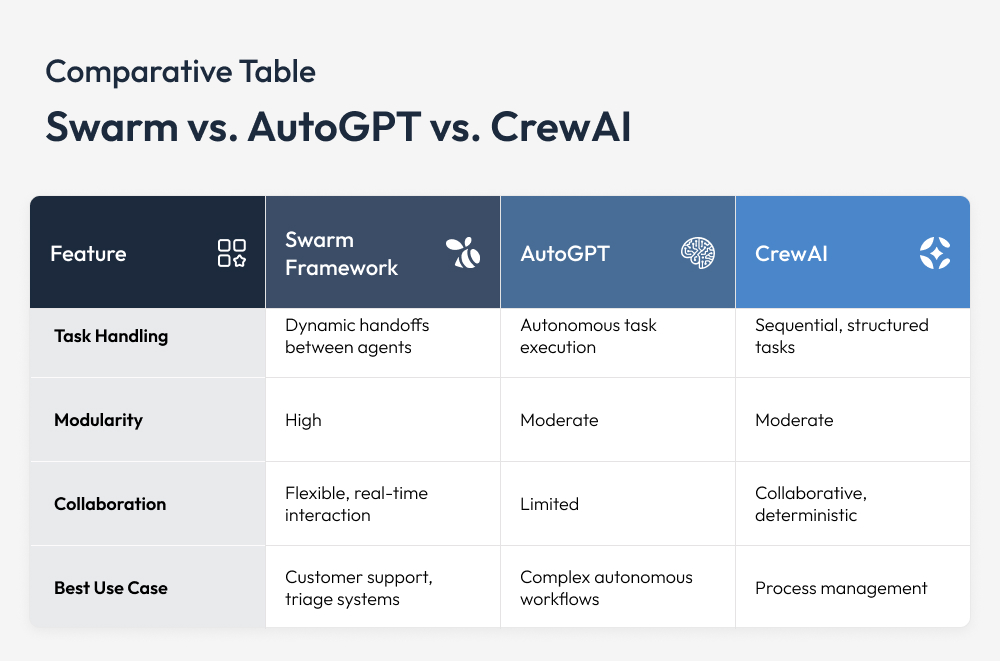
These AI agent frameworks offer unique capabilities to support AI development services, catering to different needs—from autonomous task management with AutoGPT to collaborative workflows in CrewAI. Swarm’s experimental framework, on the other hand, focuses on dynamic, real-time interactions, making it suitable for systems where flexibility is paramount. Understanding the differences between these frameworks allows businesses to select the best orchestration tools for their specific requirements.
Architectural Elements and Design Principles
Effective AI orchestration relies on several core architectural elements and design principles. These principles ensure that multiple agents operate efficiently, integrate seamlessly, and adapt dynamically to changing needs. Below is an overview of key concepts that drive performance in multi-agent systems.
Task Decomposition
Task decomposition involves breaking down large, complex workflows into smaller, manageable tasks. This strategy allows specialized agents to handle specific portions of a workflow, optimizing both speed and accuracy. Each agent is assigned a clearly defined role, ensuring smooth task execution and minimizing redundancy. Task decomposition is crucial in AI orchestration as it enhances system efficiency by leveraging each agent’s strengths in a collaborative environment.
Interoperability and Modularity
Interoperability ensures that diverse agents and systems can work together seamlessly, regardless of differences in architecture, programming languages, or platforms. A modular design approach supports interoperability by structuring AI systems into independent components that can be easily replaced or upgraded without disrupting the entire workflow. Modular frameworks like LangChain and CrewAI emphasize interoperability, allowing agents to interact smoothly across different services and APIs.
Planning Mechanisms
Planning mechanisms dictate how agents organize tasks and respond to changes. Two common planning strategies are:
- Open-loop Planning: In this approach, the agent creates a fixed sequence of actions from the start, executing tasks without adjusting based on feedback. This strategy works well for predictable scenarios where tasks and outcomes are known in advance. However, it lacks adaptability, making it less suitable for dynamic environments.
- Closed-loop Planning: Closed-loop planning enables agents to adapt based on real-time interactions. After each task or decision, the agent re-evaluates the situation and adjusts the next steps accordingly. This method ensures greater flexibility, error correction, and continuous improvement as agents learn and adapt during execution.
Real-time Task Reassignment and Feedback Loops
In orchestrated multi-agent systems, real-time task reassignment ensures that if an agent encounters a bottleneck or fails to complete a task, another agent can quickly take over (just like human teamwork). This feature improves system resilience and minimizes downtime. Feedback loops further enhance performance by enabling continuous monitoring and optimization. Agents can adjust their behavior based on past performance, refining their strategies to achieve better outcomes over time
Real-World Applications of Orchestrated Systems
Machine learning frameworks, combined with agent-based orchestration, enable powerful solutions across various industries. Orchestrated systems integrate multiple agents or models, working collaboratively to automate tasks, improve efficiency, and deliver better outcomes. Below are some notable applications.
Customer Support: Multi-Agent Systems for Dynamic Triaging
Orchestrated AI systems like OpenAI’s Swarm provide multi-agent frameworks that enhance customer support by automating dynamic triaging processes.
In these setups, a triage agent serves as the first point of contact, analyzing customer requests and directing them to specialized agents (e.g., refund, sales, or technical support). This type of orchestration ensures swift and accurate responses, reducing wait times and enhancing customer satisfaction.
Fraud Detection: Combining ML Models for Holistic Analysis
In fraud detection, orchestrated systems combine multiple machine learning models to analyze transactions from different perspectives—such as behavioral patterns, geolocation data, and historical trends.
By integrating these models, the system can identify subtle anomalies that individual models might miss, reducing false positives and negatives. This holistic approach ensures that suspicious activities are detected more accurately, improving the reliability of fraud prevention mechanisms in sectors like banking and e-commerce.
Robotic Process Automation (RPA): Distributed Task Management Across Autonomous Agents
Machine learning frameworks also play a crucial role in robotic process automation (RPA), where multiple agents are orchestrated to manage and execute complex workflows autonomously. In these systems, each agent is assigned specific tasks—such as data entry, report generation, or order processing—allowing the entire workflow to operate efficiently without human intervention
Orchestrating these agents ensures that tasks are distributed optimally, with real-time reassignment capabilities if one agent encounters an issue. This setup improves efficiency and scalability in industries that rely heavily on routine, repetitive processes.
Challenges in Orchestrating AI Systems
AI orchestration tools offer immense potential, but they also introduce significant challenges when integrating complex artificial intelligence frameworks. Ensuring seamless collaboration between multiple agents and systems requires addressing several critical issues related to architecture, security, scalability, and interoperability.
Integration Complexities Across Diverse Architectures
AI systems often rely on varied architectures, from traditional machine learning models to modern multi-agent frameworks like AutoGPT and Swarm. Orchestrating these components demands advanced AI orchestration tools that can connect systems with differing data structures, protocols, and dependencies. Integration complexity arises when these architectures use incompatible formats, creating barriers to communication and coordination.
Middleware solutions or standardized APIs are often needed to bridge these differences, but they can add development overhead.
Security Concerns with Multi-Agent Interactions
Coordinating multiple AI agents introduces new security risks, especially when systems interact dynamically. Each agent in an orchestrated framework may access sensitive data, increasing the surface area for potential breaches. Ensuring secure communication and task handoffs between agents is essential, as vulnerabilities in any agent could compromise the entire system.
AI orchestration tools must implement strong encryption protocols, regular audits, and stringent access control to prevent unauthorized access and data leakage.
Scalability and Resource Optimization in Large Deployments
Scalability becomes a challenge as the number of AI agents and frameworks grows. Orchestrating these agents efficiently requires dynamic resource allocation to avoid bottlenecks. AI orchestration tools must ensure optimal usage of computational resources—adjusting workloads and redistributing tasks based on demand. In large-scale deployments, inefficient orchestration can lead to wasted resources or downtime, especially if agents compete for the same resources without proper coordination.
Interoperability Issues Between Different Orchestration Tools
Different AI orchestration tools and frameworks often use distinct standards, creating interoperability challenges. For example, frameworks like LangChain and AutoGPT might integrate well within their ecosystems but face difficulties when interacting with other orchestration tools or external APIs.
This lack of interoperability complicates the process of building unified systems that leverage multiple tools effectively. Adopting open architectures and common data formats can help, but such solutions are not always feasible, especially in legacy systems.
Best Practices for Implementing AI Orchestration
Implementing AI orchestration effectively requires careful planning and the adoption of strategies that maximize flexibility, scalability, and long-term success. Below are some best practices that businesses and AI development services can follow to ensure the smooth integration of AI orchestration tools.
Start with Small Pilot Projects and Scale Gradually
Introducing AI orchestration tools through small-scale pilot projects is a prudent approach. It allows organizations to test new technologies, assess performance, and identify potential issues on a manageable scale. This method reduces the risk of large-scale deployment failures and offers insights that can inform larger rollouts. Gradual scaling ensures that systems remain stable as they grow, providing the flexibility needed to adapt to evolving needs.
Ensure Data Quality and Accessibility Across Agents
The success of orchestrated AI systems depends heavily on the quality of data available to agents. Ensuring that data is well-structured, accurate, and easily accessible across various agents prevents miscommunication and inefficiencies. High-quality data also facilitates better decision-making by agents and enables smoother collaboration among AI components. AI development services should establish robust data pipelines to ensure seamless data flow across agents and orchestration layers.
Adopt Modular Microservices Architecture for Flexibility
A modular microservices architecture allows organizations to build AI systems as a collection of independent services, each responsible for a specific task. This design makes it easier to update, replace, or add components without disrupting the entire system. Microservices-based frameworks also enhance the flexibility of AI orchestration tools by allowing agents to interact dynamically with different services and APIs as needed. This architectural approach is particularly valuable in rapidly evolving AI environments, where adaptability is crucial.
Continuous Monitoring and Feedback for Improvement
Effective AI orchestration requires continuous monitoring to ensure that systems are operating efficiently and meeting performance goals. Implementing feedback loops allows AI agents to learn from their actions, adjust strategies, and improve over time. AI development services should use monitoring tools and analytics platforms to track key metrics, identify bottlenecks, and fine-tune orchestration workflows. This iterative process ensures that AI systems remain responsive to new challenges and deliver optimal outcomes.
Future Trends and Innovations in AI and Machine Learning Agents
The landscape of machine learning agents and AI agent frameworks is evolving rapidly, driven by technological advancements and the growing demand for adaptive, intelligent systems. Below are key trends shaping the future of AI orchestration.
Emergence of Multi-Modal Orchestration (NLP + Vision + Robotics)
Multi-modal orchestration integrates diverse machine learning frameworks to enable AI systems to process multiple data streams simultaneously, such as natural language, visual inputs, and robotics control. This approach allows systems to perform complex tasks in real-world environments, such as processing spoken instructions while interpreting visual data to assist with autonomous vehicles or factory operations.
As these technologies converge, multi-modal orchestration is expanding into fields like healthcare (e.g., robotic-assisted surgeries), manufacturing (smart factories), and customer service (AI-powered kiosks). These innovations will enable context-aware systems that respond accurately in dynamic scenarios, improving human-machine interactions significantly.
Integration of Large Language Models in Multi-Agent Frameworks
The incorporation of large language models (LLMs), such as GPT-4, into AI frameworks is reshaping multi-agent systems. LLMs serve as powerful central coordinators, capable of interpreting complex user inputs and delegating tasks to specialized agents within the framework. This integration not only enhances the performance of conversational agents and decision-making systems but also introduces a new level of responsiveness in workflow automation.
These advancements create new opportunities for ML development services to deliver personalized AI solutions across industries. For example, AI systems in finance can utilize LLMs to interpret user queries and direct relevant agents to handle fraud detection or account management tasks. Similarly, customer support agents powered by LLMs provide real-time assistance, improving customer satisfaction.
Advances in Dynamic Orchestration Strategies for Autonomous Agents
Dynamic orchestration is redefining how autonomous agents manage tasks in real-time. Unlike traditional static workflows, modern AI systems leverage adaptive strategies that allow agents to adjust based on changes in their environment. These systems utilize closed-loop planning and feedback loops to monitor progress, reassign tasks, or reallocate resources as needed to ensure optimal outcomes.
This dynamic approach is driving breakthroughs in industries like autonomous transportation, where real-time adaptability is critical for navigation and safety. In smart factories, orchestration frameworks enable robotic systems to shift tasks dynamically, minimizing downtime and maximizing productivity. As these innovations advance, dynamic orchestration will play a key role in building resilient AI systems capable of operating autonomously in unpredictable conditions.
Conclusion
Artificial intelligence frameworks and machine learning frameworks are transforming the way businesses orchestrate multiple AI agents to drive innovation. By leveraging these orchestration strategies, organizations can enhance efficiency, streamline operations, and utilize new capabilities across industries.
Summary of Key Takeaways
The integration of AI and ML frameworks allows for the seamless collaboration of multiple agents, each performing specialized tasks. Whether through modular designs, such as LangChain and AutoGPT, or collaborative orchestration frameworks like CrewAI and Swarm, businesses can tailor systems to meet diverse needs. Task decomposition, real-time planning, and adaptive feedback loops ensure that these frameworks are not only efficient but also resilient and scalable for complex workflows.
How Businesses Can Leverage AI Orchestration for Innovation
AI orchestration offers businesses a powerful tool to automate and optimize processes across multiple domains:
- Customer Service and Support: Multi-agent systems coordinate to resolve issues more quickly by directing customer queries to specialized agents.
- Financial Services: AI agents equipped with machine learning frameworks collaborate to detect fraud through pattern analysis across diverse datasets.
- Healthcare: Orchestrated systems streamline patient care by managing data, scheduling, and diagnostics collaboratively.
By adopting these AI frameworks, businesses can focus on innovation, using automation to free up resources for strategic initiatives. The use of modular frameworks also ensures easy scaling and customization, enabling companies to respond to evolving challenges.
Future Outlook for AI/ML Agent-Based Systems
The future of AI/ML agent-based systems lies in the deeper integration of frameworks, with a focus on enhancing interoperability, scalability, and real-time adaptability. As artificial intelligence frameworks evolve, they will incorporate new capabilities like multi-modal systems (integrating vision, language, and robotics), cloud-based orchestration, and more sophisticated self-learning algorithms. These advancements will pave the way for fully autonomous agents that can manage entire business processes with minimal human oversight.
Furthermore, the continuous development of machine learning frameworks will enable agents to become more predictive and proactive, further improving decision-making and operational efficiency. Organizations that embrace these advancements early will gain a competitive edge, positioning themselves as leaders in the next wave of AI-driven innovation.

